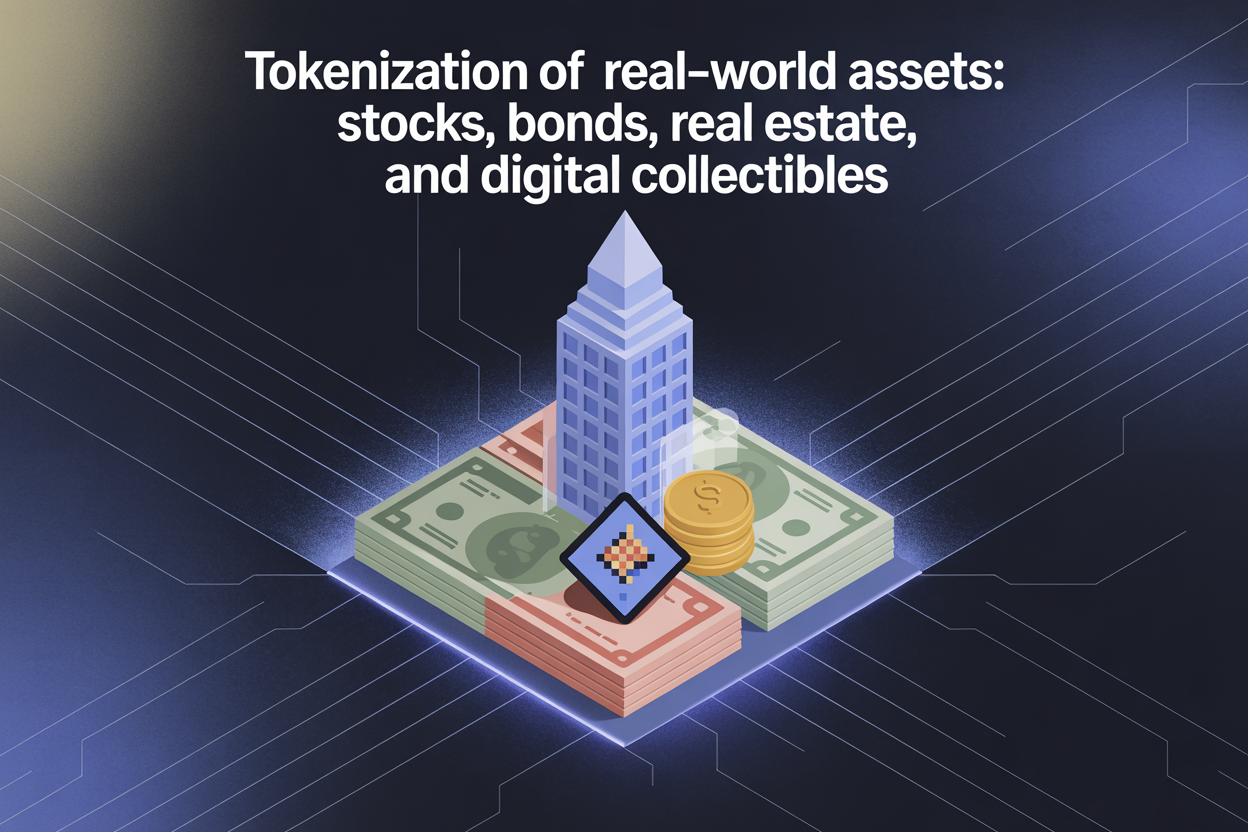
Finance is undergoing a fundamental shift. Traditional markets have long been constrained by high entry barriers, slow settlement times, and geographical restrictions. Blockchain technology and the concept of tokenization are changing this reality by transforming physical and financial assets into digital tokens that can be traded globally, instantly, and even in fractions.
The idea of valuing digital assets is not new. Online gaming economies provide early proof: Counter-Strike 2 (CS2) skins have sold for over $100,000 on secondary marketplaces, and rare digital Pokémon cards fetch thousands of dollars. These examples demonstrate that people are already comfortable treating digital items as valuable assets. If digital collectibles can thrive, why not stocks, bonds, and real estate in tokenized form?
The tokenization of real-world assets (RWAs) represents one of the most significant innovations in blockchain finance. By converting traditional assets into blockchain-based tokens, investors gain access to fractional ownership, global liquidity, and transparent record-keeping.
Tokenization is surprisingly simple in concept. First, an asset is identified—like a share of a company, a government bond, or a building. Then a legal structure, such as a trust or a special-purpose vehicle, holds the asset. Finally, digital tokens are created to represent ownership. These tokens can be traded peer-to-peer or on exchanges, and smart contracts ensure that rules such as compliance and ownership are automatically enforced.
Blockchains like Ethereum, Solana, and Polygon host these tokens, while permissioned networks like Hyperledger or Corda are popular for institutions that need more control.
Tokenized stocks let investors trade 24/7 in fractional amounts, opening the market to more people. Nasdaq has piloted blockchain settlements, and fintech startups are letting small investors access U.S. equities globally.
Tokenized bonds cut down settlement times and issuance costs. Banks like Société Générale, HSBC, and UBS have launched tokenized bond platforms, and decentralized finance (DeFi) projects are even letting tokenized U.S. Treasuries move in liquid secondary markets.
Real estate tokenization lets people own fractions of commercial and residential properties. Platforms allow cross-border participation, giving retail investors access to markets that were traditionally out of reach.
Although not traditional finance, digital collectibles demonstrate what tokenized markets can achieve. CS2 skins trade for tens of thousands of dollars, and rare digital Pokémon cards command high prices on secondary marketplaces. They operate 24/7, have global reach, and show that society already assigns real value to digital scarcity. This cultural trend points to the potential for tokenized financial assets to gain widespread adoption.
Did you know? A rare Counter-Strike 2 skin sold for over $100,000 on the secondary market, demonstrating that digital items can carry real-world value similar to stocks or bonds. Beyond investment, players treasure these skins as symbols of style, skill, and status.
Stocks are liquid and regulated, but trading is limited by market hours. Bonds are slightly less liquid but secure and regulated. Real estate is historically illiquid, though tokenization opens fractional ownership and global trading.
Digital collectibles, by contrast, are highly accessible and trade around the clock. They show that communities are ready to value and trade scarce digital assets—proof that tokenization does not just work in theory; it works in practice.
Did you know? Certain digital Pokémon cards have fetched thousands of dollars. Collectors prize them not just for potential resale, but as badges of achievement and passion, blending play, prestige, and digital ownership.
Tokenization is more than a technological trend—it is a revolution in how we think about ownership, accessibility, and value. Traditional assets like stocks, bonds, and real estate can be opened up to more people, traded faster, and handled transparently. At the same time, digital collectibles demonstrate that society is already comfortable assigning real value to digital items.
By combining financial assets with blockchain and learning from digital-native markets, tokenization promises a future where ownership is more flexible, markets are more efficient, and opportunities are available to a global audience—anytime, anywhere.